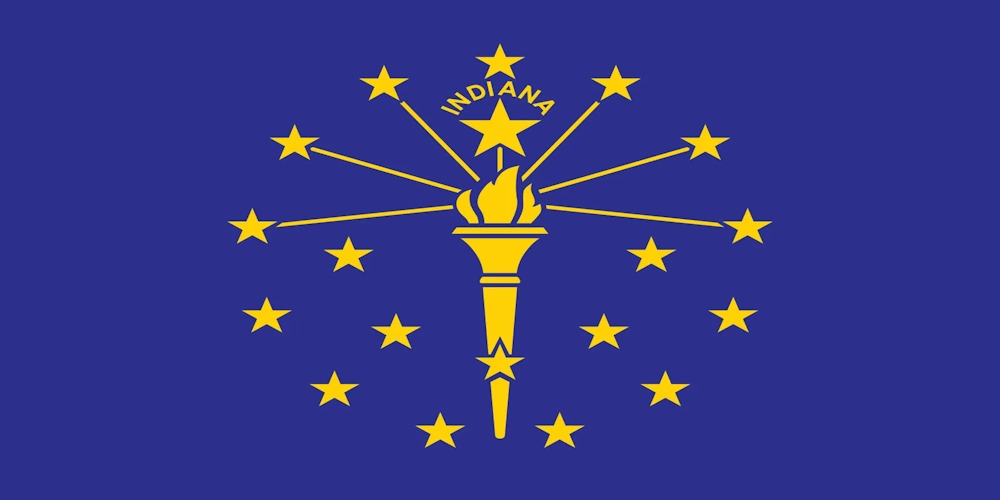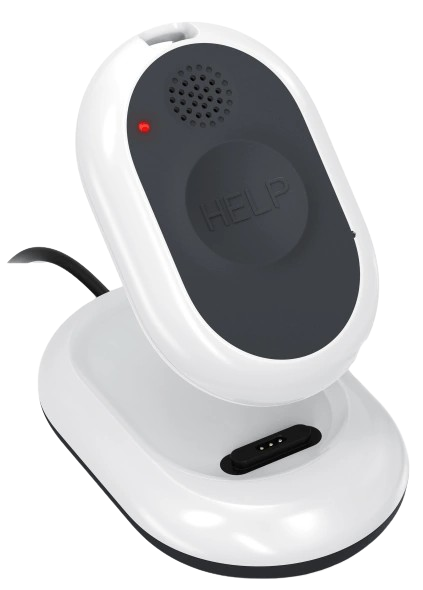In Indiana, lone workers are found across many industries—from agriculture and utility services to healthcare, security, and manufacturing. These individuals often perform tasks in isolated settings, without immediate access to supervision or help in emergencies. To protect these workers, employers must understand their safety obligations under both federal OSHA and Indiana’s state-specific program.
Indiana operates its own OSHA-approved occupational safety and health plan, giving the state authority to enforce workplace safety laws that meet or exceed federal standards. Ensuring that lone workers are protected requires a proactive approach grounded in risk assessment, training, and communication.
On This Page
Our Guide To Lone Worker Safety Policy And Legislation In Indiana
Indiana maintains its own workplace safety enforcement agency through Indiana OSHA (IOSHA), which operates under the Indiana Department of Labor. IOSHA enforces safety standards based on federal OSHA guidelines but can also tailor enforcement and outreach efforts to the unique needs of workers within the state.
While there is no standalone regulation specifically for lone workers under IOSHA or federal OSHA, employers are required to protect all employees from recognized hazards, including those related to working alone. The General Duty Clause of the Occupational Safety and Health Act obliges employers to maintain a safe workplace—meaning lone worker risks must be identified and addressed.
How Indiana Defines A Lone Worker
There is no formal legal definition of a “lone worker” in Indiana’s occupational safety legislation. However, the term generally applies to employees who work without close or direct supervision and who may not be able to quickly summon help in case of injury, illness, or emergency.
In Indiana, lone workers might include:
- Home healthcare aides and visiting nurses
- Field service technicians and utility workers
- Agricultural laborers on remote properties
- Security guards on solo night shifts
- Cleaning crews working off-hours in commercial buildings
- Maintenance workers in isolated areas
These roles can present added risks that must be managed through thoughtful policies and tools.
Employing A Lone Worker In Indiana
Employers in Indiana who rely on lone workers must take deliberate steps to keep them safe. Even though there is no regulation explicitly titled “lone worker safety,” OSHA and IOSHA require employers to account for job-specific risks, including isolation.
Recommended best practices include:
- Job Hazard Analysis: Review job roles to identify hazards tied to working alone and develop mitigation strategies.
- Regular Check-Ins: Establish protocols for routine contact, whether through phone calls, mobile apps, or automated systems.
- Training and Preparedness: Ensure lone workers know how to respond to emergencies and access support when needed.
- Technology Integration: Use monitoring tools like GPS tracking, panic buttons, and automated alerts to protect workers.
- Written Policies: Develop formal procedures addressing how and when employees can work alone, including escalation plans.
A structured approach to lone worker safety not only protects individuals but also helps businesses meet regulatory obligations.
Learn How You Can Protect Your Employees With Loneworker.com

With Loneworker.com you can be equipped with the knowledge and the means to protect your employees and protect your business. Contact us today to learn more about how Loneworker.com can protect you and your employees.
How The Safe Lone Worker App Can Protect Indiana Lone Workers And Employers
Whether a utility technician is working in a rural area or a maintenance worker is alone in a large facility, real-time monitoring can make a life-saving difference. The Safe Lone Worker app provides a digital safety net for Indiana employers, offering features such as GPS location tracking, automated check-ins, fall detection, and emergency alerts.
With this app, organizations can stay connected to employees working in isolation and respond rapidly in the event of a crisis. It’s an effective way to support compliance with IOSHA standards while improving peace of mind for both workers and managers.
Indiana Lone Worker Policies
Indiana administers its own OSHA-approved occupational safety and health program through Indiana OSHA (IOSHA), under the Indiana Department of Labor. This gives the state authority to enforce safety standards that align with or exceed those set by federal OSHA. Although Indiana does not have a specific regulation dedicated solely to lone workers, the General Duty Clause still applies. Employers are responsible for identifying risks and implementing controls to protect any employee working in isolation.
For the latest information and regulatory updates, visit the Indiana Department of Labor and OSHA. This guide is for general reference and should not be considered a replacement for legal advice or regulatory consultation.
Indiana Lone Worker Resources
OHS Contact Centre
- 1-866-415-8690
CDC / NIOSH
- 800-232-4636

Affordable Monitoring For Lone Workers In Indiana

-
 Monitoring Your Employees' Safety
Monitoring Your Employees' Safety
-
 GPS Tracking And Monitoring
GPS Tracking And Monitoring
-
 Man Down Panic Alerts
Man Down Panic Alerts
-
 24/7 Protection Anywhere
24/7 Protection Anywhere
Lone Worker Legislation
Lone Worker Safety Policies And Legislation By State
-
 Alabama State Safety Policies And Legislation
Alabama State Safety Policies And Legislation
-
 Alaska State Safety Policies And Legislation
Alaska State Safety Policies And Legislation
-
 Arizona State Safety Policies And Legislation
Arizona State Safety Policies And Legislation
-
 Arkansas State Safety Policies And Legislation
Arkansas State Safety Policies And Legislation
-
 California State Safety Policies And Legislation
California State Safety Policies And Legislation
-
 Colorado State Safety Policies And Legislation
Colorado State Safety Policies And Legislation
-
 Connecticut State Safety Policies And Legislation
Connecticut State Safety Policies And Legislation
-
 Delaware State Safety Policies And Legislation
Delaware State Safety Policies And Legislation
-
 Florida State Safety Policies And Legislation
Florida State Safety Policies And Legislation
-
 Georgia State Safety Policies And Legislation
Georgia State Safety Policies And Legislation
-
 Hawaii State Safety Policies And Legislation
Hawaii State Safety Policies And Legislation
-
 Idaho State Safety Policies And Legislation
Idaho State Safety Policies And Legislation
-
 Illinois State Safety Policies And Legislation
Illinois State Safety Policies And Legislation
-
 Indiana State Safety Policies And Legislation
Indiana State Safety Policies And Legislation
-
 Iowa State Safety Policies And Legislation
Iowa State Safety Policies And Legislation
-
 Kansas State Safety Policies And Legislation
Kansas State Safety Policies And Legislation
-
 Kentucky State Safety Policies And Legislation
Kentucky State Safety Policies And Legislation
-
 Louisiana State Safety Policies And Legislation
Louisiana State Safety Policies And Legislation
-
 Maine State Safety Policies And Legislation
Maine State Safety Policies And Legislation
-
 Maryland State Safety Policies And Legislation
Maryland State Safety Policies And Legislation
-
 Massachusetts State Safety Policies And Legislation
Massachusetts State Safety Policies And Legislation
-
 Michigan State Safety Policies And Legislation
Michigan State Safety Policies And Legislation
-
 Minnesota State Safety Policies And Legislation
Minnesota State Safety Policies And Legislation







